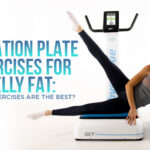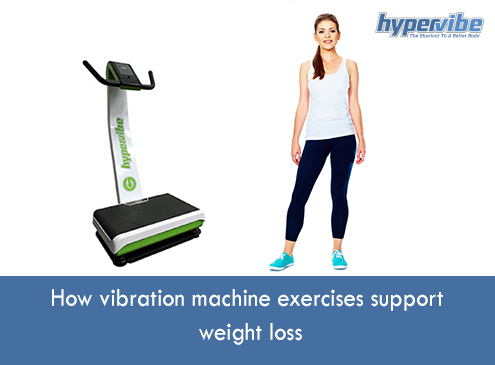The Latest Fitness Craze: Hula Hoop for Weight Loss
No longer the domain of children on playgrounds, the hula hoop for weight loss is the latest fitness craze for people who are looking for fun and creative ways to get fit. If you’re looking for something a bit different, you’ll be pleased to know that there are many benefits to hula hooping as a cardiovascular form of exercise.
It improves balance, reduces stress, boosts your fitness levels, works your hand-eye coordination, builds core muscles, decreases bad cholesterol, and burns calories and fat, of course! But in addition to this, it’s great for improving your balance, it’s affordable and can be done almost anywhere and the best part – it’s a whole lot of fun!
But let’s get down to the nitty-gritty. The question on everyone’s minds: can it help you lose weight and how quickly can this happen? We take a closer look.
How long does it take to lose weight hula hooping?
We all know what a hula hoop is. It’s a large, plastic circle that we can place around our waists and twirl and rotate our abdomens to ensure it stays up in the air. In this case, we’re not talking about any extra weight being added to it.
We’re simply talking about the good ‘ol hula hoops that we used to enjoy as kids. While it’s great for use on your legs and even arms, how long does it take to see results from the hula hoop for weight loss?
The experts pipe in with their answers. According to some, using a regular hula hoop to see results such as weight loss will require a commitment of at least 150 minutes a week. That’s a 30-minute workout every weekday.
Others take the research a bit further and indicate that a 30-minute workout is expected to shed around seven calories per minute or approximately 210 calories during your workout regimen (e.g. you’re looking at losing nearly 500 calories in an hour).
The recommended time is about 20 to 30 minutes per session. And it’s best combined with other strength and aerobic exercises, too.
Do weighted hula hoops work for weight loss?
Because the good ‘ol hula hoops don’t offer much resistance, weighted hula hoops were added to the mix. Much like the name suggests, these are hula hoops with added weight on them ranging from as little as one pound and going a bit higher up to three to five pounds.
Because of the added resistance, a weighted hula hoop for weight loss can help you lose weight and they work. That is, provided that you use them consistently on an ongoing basis.
In fact, if you burn around 500 calories a day, you’re likely to lose around one pound per week. This will, however, also be dependent on the diet you consume and the amount of exercise you do.
Luckily, weighted hula hooping is not only great for your abs and core. It’s also great for stabilizing your lumbar region and your legs, arms, shoulders and glutes. This makes the weighted hula hoop much more effective than a traditional one.
How long does it take to see results with a weighted hula hoop?
As mentioned above, depending on your exercise regimen and your commitment to hula hooping with a weighted hoop, you can see weight loss of around one pound per week. In other words, your hula hoop weight loss, on average, can reduce your waist and hip size between 1.4 cm and 3.4 cm in the space of around six weeks.
Ultimately though, it all comes down to how much you’re willing to commit to your exercise routine, your current fitness and health levels, your goals, the weight and resistance of the hoop and your individual preferences.
What is the drawback of hula hoop weight loss?
As with any exercise routine, hula hooping doesn’t come without its drawbacks. Yes, it has low intensity on the knees, and it’s great for your abs. But on the other hand, it can also cause some added strain and pressure where you don’t particularly want it.
With this in mind, here are some of the hula hoop for weight loss drawbacks you should be looking out for before you start out so that you are best prepared for the fitness road ahead of you and to determine whether this truly is the right option for you.
- It can strain your back and stomach, especially with a weighted hoop. This is the case if you’re just starting out and you’re taking on more strain than your body is capable of handling. In this situation, it’s highly advisable that you speak to a medical professional before you start, especially if you’re prone to injuries or you have any pre-existing conditions.
- Joint pain in the knees and ankles can be a further drawback to consider. You should therefore consider starting out with a lighter hoop and gradually building up more weight as your strength increases.
- Your back and shoulder muscles could experience strain. A major cause of this is incorrect form or excessive motions. Taking short breaks in between sessions can help to reduce this situation. However, if you have existing back problems such as herniated disc, lower back pain or spinal fractures, it’s highly advisable you consult with a medical expert first so as not to exacerbate your condition.
- If you plan on hooping with an open midriff, your skin might get irritated by the continued spin of the plastic against your skin. Apart from this, there is also a greater chance of sustaining bruising. So, this is a big one to look out for and prevent.
- Many “hoopists” absolutely love the hooping that they do. But others can find it a bit boring and monotonous after some time. This is why watching TV or listening to good music while you’re exercising could be a fun way to break the monotony.
- A more practical consideration is the fact that you need space to hula hoop. At least a couple of square metres all around you so that you don’t end up feeling like a bull in a china shop.
- Our final analysis brings us to this: hula hooping on its own is not sufficient as a total body workout. Yes, it is an aerobic activity that works your core. However, it fails to provide sufficient weight-bearing activity that utilises all muscle groups. It’s therefore advisable to combine it with activities such as running, spinning, cycling, playing tennis or swimming.
The bottom line
Now that you’ve got more information about hula hoop for weight loss, you can make a more informed decision about whether or not it’s the right exercise type for you. But, if you’re looking for something different and at the same time, something you can try at home, there are other methods you can use. Have you tried a vibration plate to lose weight? It’s a highly effective way of shedding pounds and getting in shape. Find out more about it here.
Resources:
https://www.washingtonpost.com/lifestyle/wellness/weighted-hula-hoop-benefits-waist/2021/06/22/5eeed128-d366-11eb-ae54-515e2f63d37d_story.html
http://www.healthline.com/health/exercise-fitness/hula-hoop-benefits#1
https://www.nbcnews.com/select/shopping/weighted-hula-hoops-ncna1264292
https://news.yahoo.com/weighted-hula-hoop-weight-loss-182331104.html?guccounter=1&guce_referrer=aHR0cHM6Ly93d3cuZ29vZ2xlLmNvbS8&guce_referrer_sig=AQAAAAhGiJRrXzC70fq74lRXXlr9JLfkFA8m5qp0IJWkMOJNaaKtCyBr3KI8nieToB6uBupkadUC652N78DImaSwbRXH2pSVvVmoxbgIcJj_NLw1ElAIf_ZYKl9PAmzQb2OURWAxKpd5rmwMJsvfAElmC2adBKsD1KP8ooCfX7Ow7-eU











